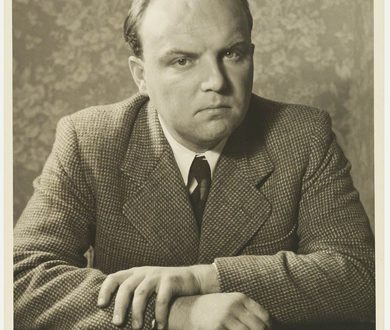
Vitaliy Sergeevich Hubarenko (Vitaliy Hubarenko) |
Vitaly Hubarenko
The main emotional impression that is born when meeting with the work of V. Gubarenko can be defined as a scale. This is manifested in the artist’s attraction to serious universally significant topics and a wide range of images – the historical and heroic past of the country and the moral problems of today, the world of personal feelings, the inexhaustible poetic world of folk fantasy and elusively changeable nature. The composer constantly turns to monumental musical, theatrical and instrumental genres and forms: 15 operas and ballets, 3 “big” and 3 chamber symphonies, a series of instrumental concertos, including the Concerto grosso for strings, choral compositions and vocal cycles on poems by Russian and Ukrainian poets , symphonic suites, poems, paintings, music for dramatic performances and films.
Hubarenko was born into a military family. He began to study music relatively late – at the age of 12, but these classes, due to the frequent relocations of the family to his father’s destination, were unsystematic and semi-amateur in nature. Only in 1947 did he start studying at the Ivano-Frankivsk and then at one of the Kharkov music schools.
Self-education and a keen interest in music played a greater role during this period than schooling, especially since the gift of improvisation and a craving for independent creativity clearly manifested themselves. By the time he entered the music school (1951), the young man managed to try his hand at opera, piano, vocal and choral music.
The first real school for Hubarenko was composition lessons under the guidance of the composer and teacher A. Zhuk, and during the years of study at the conservatory in the class of D. Klebanov, who educated several generations of Ukrainian composers, the talent of the young musician found specific forms of application. Gubarenko works a lot and fruitfully in the field of vocal lyrics, creates a cycle of a cappella choirs to the verses of S. Yesenin and the cantata “Rus”.
In the young man’s passion for the beauty and emotional expressiveness of the human voice, his work in the choir, led by the famous choirmaster and composer Z.
Overseas. Possessing a strong and expressive bass, Gubarenko enthusiastically studied in the choir and helped the leader in working with the team. The experience gained for the author of future operas was truly invaluable. Despite the experimental, innovative nature of a number of the composer’s works, the parts in his operas are always vocal and easy to perform. The time of formation is the 60s. – for Gubarenko it was marked by the first significant success of his works on the all-Union stage (the composer’s First Symphony at the All-Union Competition in Moscow in 1962 was awarded a diploma of the first degree) and the premiere of the opera “Death of the Squadron” (after A. Korneichuk) on the stage of the Kyiv Academic Opera Theater and ballet them. T. G. Shevchenko. The work of the composer and the team was highly appreciated by the press and music critics.
The next significant milestone in the creative evolution of the musician was the ballet “Stone Lord” (based on the drama of the same name by L. Ukrainka). The original innovative work of the Ukrainian poetess, which unusually interprets the “eternal” plot of world literature about Don Juan, prompted the authors of the ballet (librettist E. Yavorsky) to look for an unconventional solution for the future performance. This is how the “philosophical drama in ballet” was born, which caused a number of original stage decisions in the theaters of Kyiv, Kharkov, Dnepropetrovsk, Ashgabat and the Bulgarian city of Ruse.
In the 70s. Gubarenko actively works in almost all genres. Bright citizenship, the ability to respond to the demands of the time with all the passion of an artist-publicist – this is the position that the composer defines for himself. During these years, in many respects unexpectedly for listeners, a new facet of the talent of an already mature master is revealed. With the birth of one of the composer’s most original works, the chamber intimate monodrama Tenderness (based on the short story by A. Barbusse), a lyrical string sounded in his work in full voice. This work played an important role in the evolution of the composer’s creative interests – the genre spectrum of his compositions for musical theater is significantly expanding, new artistic forms are being born. This is how the lyrical duodramas “Remember Me” (1980) and “Alpine Ballad” (1985), the symphony-ballet “Assol” (1977) appear. But the civil, heroic-patriotic theme continues to excite the composer. In the Third Symphony with the choir “To the Partisans of Ukraine” (1975), in the music for two parts of the film trilogy “The Thought of Kovpak” (1975), in the opera “Through the Flame” (1976) and in the ballet “Communist” (1985), the artist again appears as muralist, developing the artistic principles of the heroic-epic genre.
The composer celebrated his fiftieth birthday with the premiere of a work that was both the pinnacle of achievements and the source of future discoveries. The opera-ballet Viy (after N. Gogol), staged at the Odessa Opera House (1984), was unanimously recognized by the public and critics as an event in the life of the Soviet musical theater. Lively, colorful, as if taken from nature, folk characters, colorful everyday life, juicy folk humor and fantasy were vividly embodied in a grandiose musical and theatrical performance.
In the comic opera The Matchmaker Willy-nilly (based on G. Kvitka-Osnovyanenko’s play Shelmenko the Batman, 1985) and in the ballet May Night (after Gogol, 1988), Gubarenko develops and enriches the stylistic principles of Viy, once again emphasizing his deep inner kinship with the national culture, its traditions and the ability to always be at the level of the latest achievements of modern music.
N. Yavorskaya





